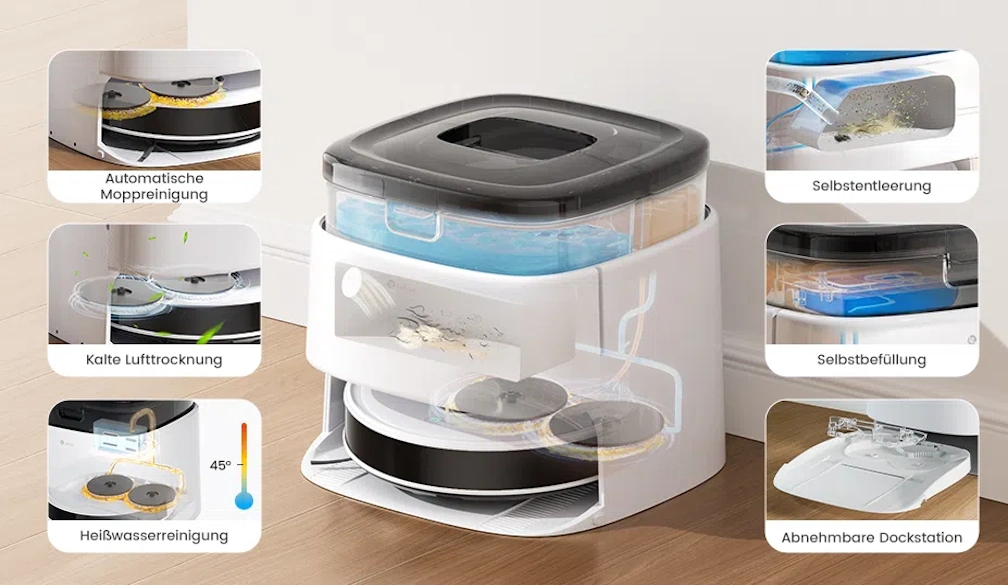eCommerce Site Design: Building Modern, High-Performing Online Stores for Australian Businesses
- Written by The Bulletin

In the digital-first business environment, the quality of your eCommerce site design can make or break your success. Australian consumers are more discerning than ever, expecting fast, visually appealing, and easy-to-use online stores. Whether you’re running a boutique clothing label, a tech retailer, or a homeware brand, your eCommerce website is the heart of your digital presence. A thoughtfully developed website not only helps attract visitors but also keeps them engaged and encourages them to buy.
The Importance of a Professional eCommerce Site Web Design
A professional eCommerce site web design does more than make your store look good — it creates a seamless, intuitive experience that simplifies the customer journey. From browsing and adding products to completing a transaction, every step needs to be simple and stress-free. Customers want convenience, and that means your website must load quickly, display beautifully on all devices, and offer an easy checkout process.
When you invest in professional eCommerce design, you’re building a foundation for long-term business growth. Every design element, from colour palette to page structure, should be strategically chosen to reflect your brand’s personality while supporting usability and performance.
Speed, Performance, and SEO Integration
Website speed is a crucial factor that influences both user satisfaction and search engine performance. Studies show that even a one-second delay in page load time can lead to a significant drop in conversions. Expert eCommerce website designers in Australia know how to optimise every aspect of your site — from images and code to hosting and caching — to ensure fast and reliable performance.
Additionally, a well-structured design helps improve your site’s search engine optimisation (SEO). Clean URLs, optimised headings, and properly tagged product images all make it easier for search engines to crawl and index your content. With proper design and SEO working together, your site can attract more organic traffic and convert more leads.
How Design Shapes the Customer Experience
The best eCommerce site design starts with understanding customer behaviour. A cluttered layout, inconsistent visuals, or slow performance can drive potential customers away within seconds. On the other hand, a clean and responsive design keeps visitors on the site longer, allowing them to explore products and make informed purchasing decisions.
Australian shoppers are known for valuing trust and transparency. Effective eCommerce design builds that trust by using professional imagery, clear product descriptions, and visible security badges. Easy navigation, clear contact information, and transparent policies further enhance credibility, turning casual visitors into loyal customers.
Responsive Design for the Mobile-First Shopper
Mobile commerce continues to grow rapidly across Australia, making responsiveness one of the most important features of eCommerce site web design. A responsive website adapts seamlessly to different screen sizes, ensuring that users have the same high-quality experience on smartphones, tablets, and desktops.
Mobile-friendly websites not only improve accessibility but also enhance search engine rankings. Google prioritises mobile-optimised sites, so ensuring your design works across all devices directly impacts your visibility and traffic.
Visual Appeal and Brand Consistency
In a crowded online marketplace, your brand identity helps you stand out. A cohesive eCommerce site design integrates your logo, colours, typography, and tone of voice consistently across every page. Whether customers land on your homepage, product page, or checkout, they should instantly recognise your brand’s look and feel.
Australian consumers respond well to authenticity and clarity. High-quality visuals, lifestyle photography, and engaging content all contribute to a memorable user experience. The goal of good design is not just to impress but to create a sense of trust that encourages repeat purchases.
Product Display and Conversion-Focused Layout
An eCommerce website’s success largely depends on how well it showcases products. The best eCommerce website designers create layouts that make it easy for shoppers to find, compare, and purchase products. Large, high-resolution images, zoom features, and informative descriptions help customers make confident buying decisions.
Designers also focus on conversion-oriented elements like prominent “Add to Cart” buttons, customer reviews, and limited-time offers. The checkout process is equally important — it should be straightforward, fast, and secure. By reducing unnecessary steps, a well-designed checkout page helps minimise cart abandonment and increase completed sales.
Integrations and Scalability
Modern eCommerce stores often rely on integrations with third-party systems — from payment gateways like PayPal and Afterpay to inventory management and marketing tools. Professional eCommerce site web design ensures that these integrations work flawlessly without compromising speed or security.
As your business grows, scalability becomes key. Expert designers plan for future expansion, allowing your website to handle increased traffic, new products, or additional store locations without needing a complete rebuild.
Trust, Security, and Compliance
Australian consumers are highly conscious of online security and data protection. A trustworthy eCommerce site design includes SSL certificates, secure payment systems, and clear privacy policies to reassure customers that their personal information is safe. Designers also ensure compliance with Australian consumer law, including transparent pricing, refund policies, and accessibility standards.
Security isn’t just about protecting data — it’s about maintaining your brand’s reputation. A secure, well-maintained website fosters confidence and encourages customers to shop without hesitation.
Analytics and Continuous Improvement
The best eCommerce websites are never static. Continuous improvement, guided by analytics, helps businesses stay competitive. Professional designers integrate tracking tools like Google Analytics and heatmaps to understand user behaviour and identify opportunities for optimisation. Whether it’s improving navigation or testing different landing page layouts, data-driven design ensures your website continues to evolve and perform.
Conclusion
A powerful eCommerce site design is essential for any Australian business looking to succeed online. From the initial layout to ongoing optimisation, expert eCommerce site web design combines creativity, technology, and strategy to deliver real results. Skilled eCommerce website designers understand how to blend aesthetics with performance, creating online stores that engage visitors, build trust, and drive sales.
By investing in professional design, you set your business apart in an increasingly competitive online marketplace. The right eCommerce website doesn’t just sell products — it creates experiences, builds relationships, and supports long-term brand growth.













